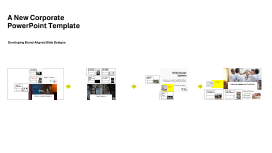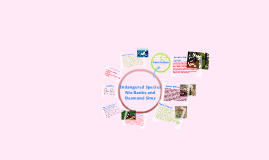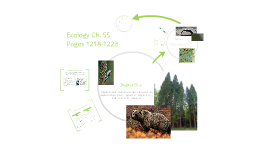Ecology Powerpoint
Transcript: ECOLOGY POWERPOINT By: The Jacob Haymans What is ecology? Comes from Greek word "oikos" meaning a place to live. Theophrastus was one of the first people to discuss the relationship between living things and their environments. Ecology is a complex science that draws on many areas of knowledge. (Organic, Inorganic, Chemistry, Meteorology, ect.) Why should you care? We have as much impact on our surroundings as they do on us. If we are not respectful of our environment we can mess it up which affects us in the long run. Savanna Tropical version of grasslands. Climate patterns of strong dry seasons for most of the year. Few trees spread out. Trees in the savanna: Shrubs, Baobab tree, Acacia tree Animals in the savanna: lions,elephants, zebras, giraffes Found in some parts of South America, India, and Australia, and in many parts of Africa. Desert A desert is defined simply by the amount of rainfall. Less than 10 inches a year. Trees and flowers: Palo Verde Trees, Tumble weed, Desert Willow, Alkal Maripson lily, Desert star-vine. Animals: Snakes and Scorpians, Camels, Hyenas Boreal or Taiga forest Taiga is the Russian word for forest Largest Biome Located at the top of the world in Eurasia and North America Temperature can be as low as -65 degrees in the winter and as high as 70 degrees in the summer Trees in the Boreal: Evergreen Spruce, fir, pine, deciduous larch Animals in Boreal: Wolverines, red squirrels, red deer, bobcat Chaparral A shrubby coastal area that has hot dry summers and mild, cool, rainy winters. Tall dense shrubs Total rainfall ranges from 15-40 inches per year. Chaparral cont. Located on the southern coast of California, some parts of the Mediterranean, The coast of Chile, The cape region of South Africa. Animals living in this region include Foxes, Coyotes, Lynx, Road Runners, Scorpians, and Rattlesnake. Tundra Comes from the Finnish word "tunturia". Average temperature of -70. The bare ground can some mosses and small plants but not trees. Only 48 species of land mammals. Animals consist of rodents, wolves foxes, deer, and of course the polar bear. Rainforest Forest of tall trees in a region of year long warmth. 1/4 of all medicine comes from this biome. Found in Central America, Africa, and Indo-Malaysia. Home to over 50% of the worlds animals. Deforestation is a big problem. In doing this project we learned more about the 8 biomes. I never knew what a chaparral was until now. We got to see how beautiful this planet really but if we don't be careful we can destroy it. Northern Africa Located on the western part of the U.S.A. Australia What we learned THE END

















